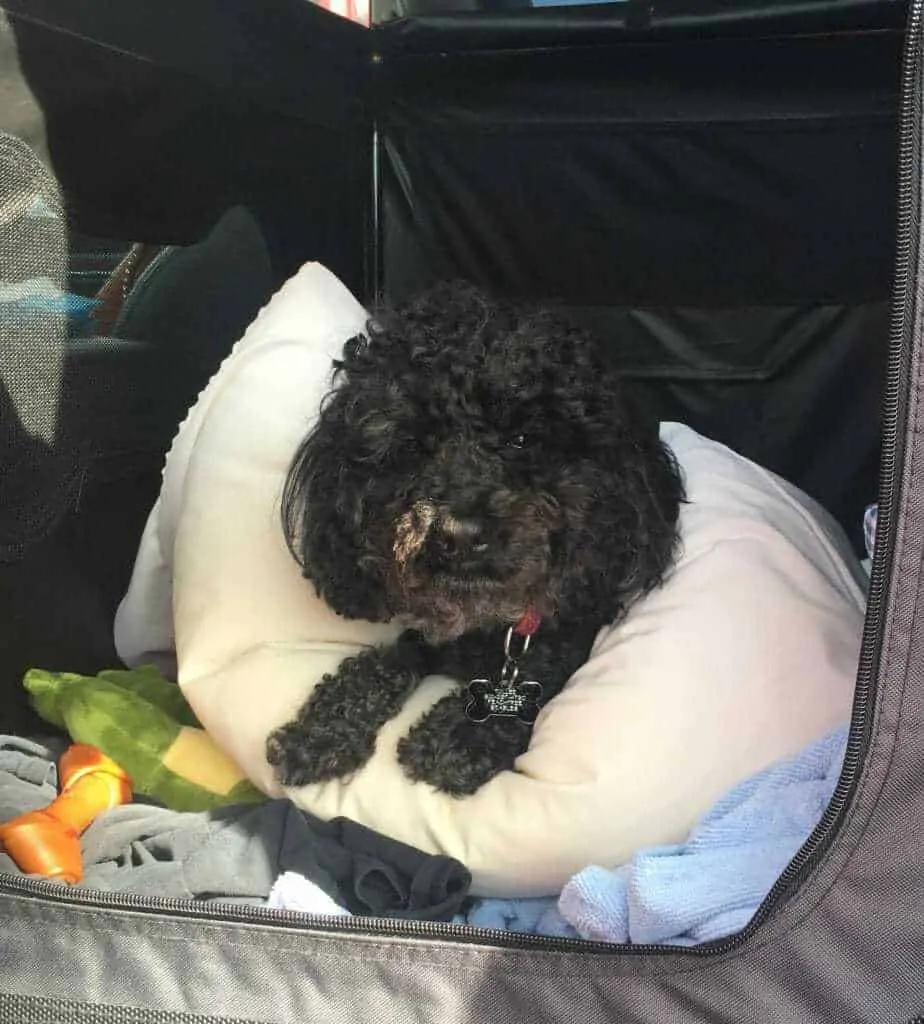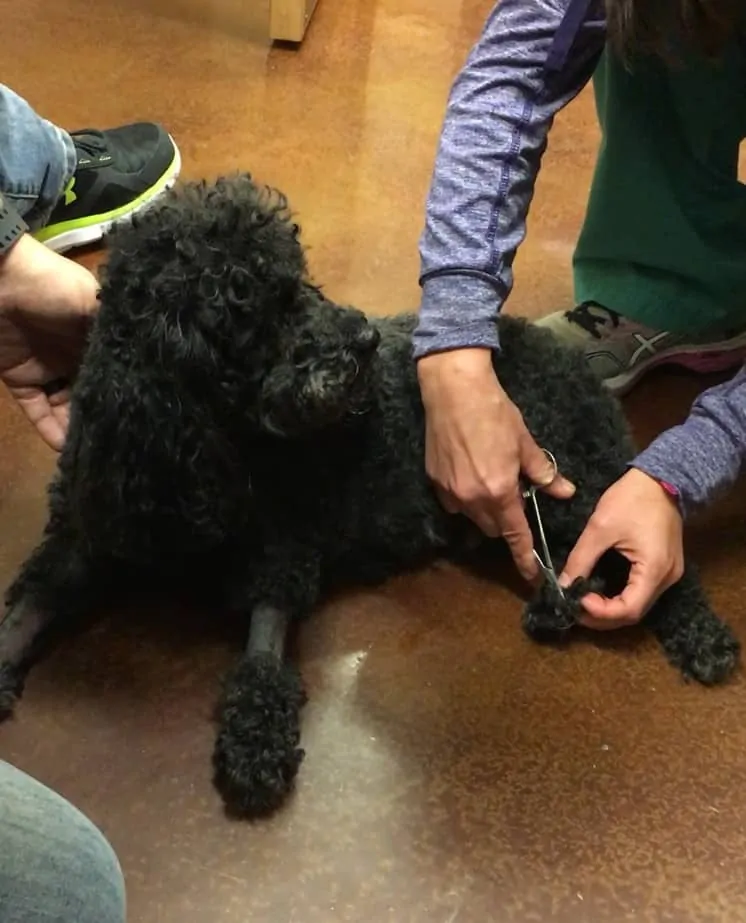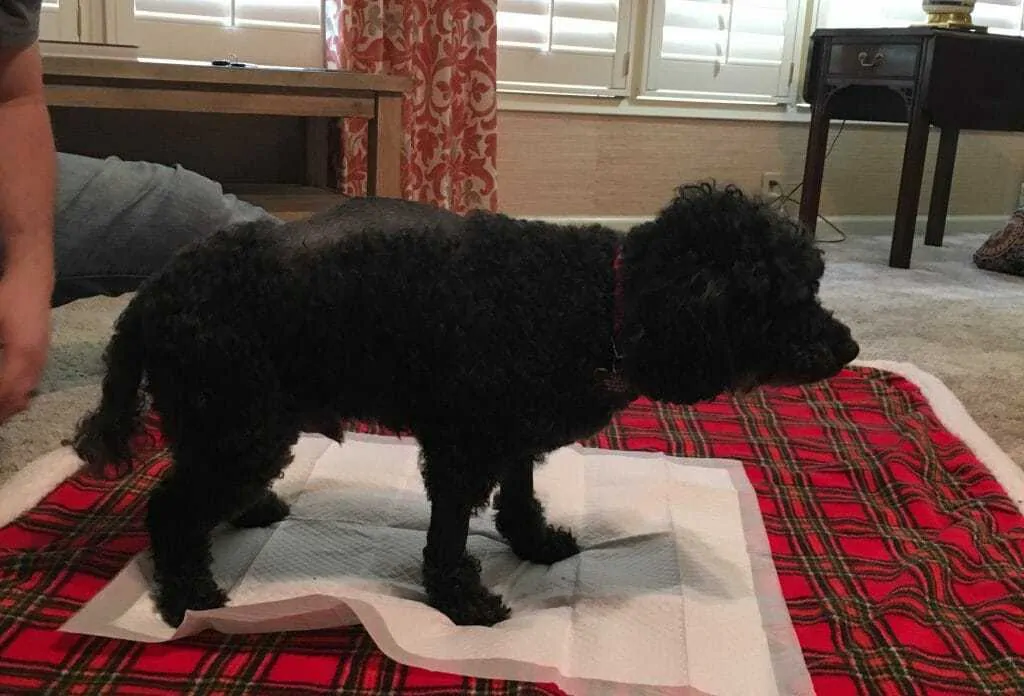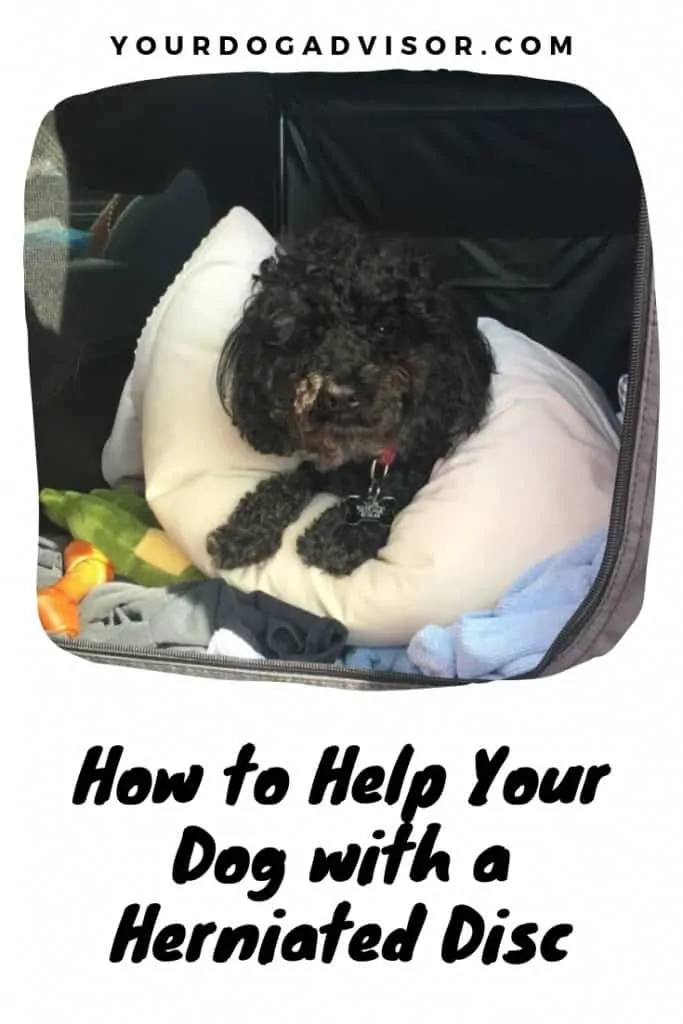About a year ago, my cousin’s dog Tolei had a herniated disc, also known as a “slipped disc.” It wasn’t very dramatic at first. Madison noticed that he whimpered when he jumped off the couch one morning. Throughout the day, he seemed “off.” He didn’t want to eat, play, or go outside. He was clumsy and stumbled multiple times. By the time her husband came home that evening, Tolei was unable to stand or walk on his back legs. When they touched Tolei’s paw pads, something he normally pulls back from, he didn’t seem to notice the pressure at all. They took Tolei to the vet right away.
Tolei had a herniated disc.
Contents
What is a herniated disc?
A herniated disc, or “slipped disc” is a spinal condition that is caused when one of the fluid-filled discs in the spine swells or ruptures and presses on the spinal cord. A compressed spinal cord can cause the animal to lose sensation and mobility in some or all parts of the body.
What causes a herniated disc?
The most common cause of a herniated disc is Intervertebral Disc Disease (IVDD). IVDD is a long-term, progressive weakening of the spinal discs. In most cases, the disease goes on without symptoms until a relatively minor stressor (such as jumping off the couch) causes a disc to rupture in an acute episode.
Symptoms of a Herniated Disc:
- Anxious attitude
- Crying out in pain
- Muscle spasms in or around the spinal area
- Urinary and/or fecal incontinence
- Changes in gait (walk), including
- Walking hunched over
- Limping (lameness)
- Sudden refusal to walk
- Partial or complete paralysis
- Lowered head
- Dragging a foot or “knuckling under” on one or more legs when walking
How can I help if I think my dog has a herniated disc?
If you suspect a herniated disc, time is of the essence. Seek veterinary attention immediately. The longer the spinal cord is compressed by the ruptured disc, the more damage is done – and the greater the chance the damage will become permanent. The sooner you seek veterinary attention for your dog, the better his or her chances of recovery will be.
What to expect when you go to the vet
Diagnostic Imaging
Your vet will likely do x-rays of the spine and a neurological exam. He or she may also request advanced imaging such as an MRI or a myelogram. The goal of all of these diagnostics is to help the vet determine where the injury is located on the spine and to grade, or determine the severity of, the herniated disc. Disc injuries are measured on a scale from 1 to 5, with 5 being the most severe.
Tolei’s neurological exam. The veterinarian is putting firm pressure on Tolei’s foot to see if he has sensation in that limb.
Surgery or Crate Rest
If the injury is severe, the vet may recommend surgery. The purpose of the surgery is to relieve the pressure on the spinal cord. The most common way of doing this is through a procedure called a hemilaminectomy. If surgery is recommended, the sooner it is performed, the better the chances of recovery.
If the pressure on the spinal cord is less severe, the vet may instead recommend a course of medications and complete, confined rest for at least 4 weeks. During this time, the dog should be confined to a crate except to go to the bathroom and for physical therapy.
Tolei standing 1 week post-surgery. You can see the shaved area where they operated to relieve the pressure on his spinal cord.
Tips for Helping Your Dog through Crate Confinement:
- Unless your dog feels safer in a plastic crate, find a wire crate with see-through sides to minimize the feeling of being closed-in.
- You can buy a cover for the wire crate to use at night, or simply drape a blanket over it.
- Keep the crate in view of the family to keep your dog’s spirits up.
- As long as it doesn’t excite your dog too much, visit often. Sit with your dog and talk about anything and everything. Just the sound of your voice will help.
- If your dog is paralyzed, it is possible he or she will be incontinent during this period. You may need to help him/her to urinate by expressing the bladder, which your vet should demonstrate for you.
- Gentle massage can help your dog’s spinal cord “reconnect” with its nerves. with neurological recovery. For example, you can gently massage the dog’s foot pads if the back legs are paralyzed.
Rehabilitation for Dogs with Herniated Disc
After surgery and/or crate rest, there will come a time when your dog is ready to get moving again. During this time, your vet may recommend a Certified Canine Rehabilitation Practitioner (CCRP) or animal physiotherapist. He or she can provide a structured rehabilitation program tailored to your dog’s injury and needs. Be prepared:
Walking will be a struggle at first. At first, particularly if your dog was partially or completely paralyzed, your dog may walk oddly or not at all. It is difficult to watch, but it is a part of the recovery process.
Tolei struggles to walk 2 weeks post-surgery.
Rehabilitation for dogs is a lot like physical therapy is for people. You and your dog’s therapist will be their coach and cheerleader during this process. Expect your dog to be very tired after sessions. Your dog’s therapist may use hydrotherapy, which is where water supports the dog’s weight so that he/she can learn to walk again.
Tolei in the hydrotherapy tank.
In this video, Tolei makes hydrotherapy look easy, but it is very hard work!
How you can help with your dog’s rehabilitation:
- You are your dog’s best motivator. Your dog needs you for a cheerleader!
- Resist the urge to help your dog too much through exercises. It’s very hard to watch our pets struggle, but some struggle is necessary to rebuild muscle and neural connections.
- Follow the canine therapist’s instructions for home care to the letter. Homework matters!
- Watch your dog’s weight during this time and be sure not to overfeed. Excess weight puts additional strain on the spine.
- The canine therapist may also use a “dog wheelchair” or cart during therapy. Sometimes, the cart is used simply to support the dog’s weight while he or she learns to walk again. Mobility aids can be temporary or permanent.
Tolei after a few weeks in hydrotherapy.
Finally, consider acupuncture for your dog.
Canine acupuncture is valuable for a number of ailments. When used together with conventional medicine, acupuncture has been shown to increase a dog’s chances for a full recovery from a herniated disc.
Tolei never gave up on learning to walk again, and Madison and her husband never gave up on him. His recovery was a long process, and there were moments when they were afraid he’d never walk again.
Tolei walking a year later.
As you can see, he is still a little wobbly when he walks. But he gets the job done and he seems pretty happy to boot!
If your dog shows symptoms of a herniated disc, don’t panic. Get him or her to the vet immediately for treatment. Realize that recovery can be a long process, and that you are your dog’s best cheerleader. They are counting on you to be their emotional and physical support, just like a person with a spinal injury. Learning to walk again can take time, and some impairment may stay with them their whole lives. Even if this is the case, there are many ways to help disabled dogs live full and happy lives. Don’t give up!

Jen Jones is a professional dog trainer and behavior specialist with more than 25 years of experience. As the founder of ‘Your Dog Advisor’ and the ‘Canine Connection’ rehabilitation center, she applies a holistic, empathetic approach, aiming to address root causes rather than merely treating symptoms.
Well known for her intuitive and compassionate approach, Jen adopts scientifically-proven, reward-based methods, encouraging positive reinforcement over punishment. Jen specializes in obedience training, behavior modification, and puppy socialization. Her innovative methods, particularly in addressing anxiety and aggression issues, have been widely recognized. Jen has worked with many of the world’s leading dog behaviorists and in her free time volunteers with local animal shelters and rescue groups.



